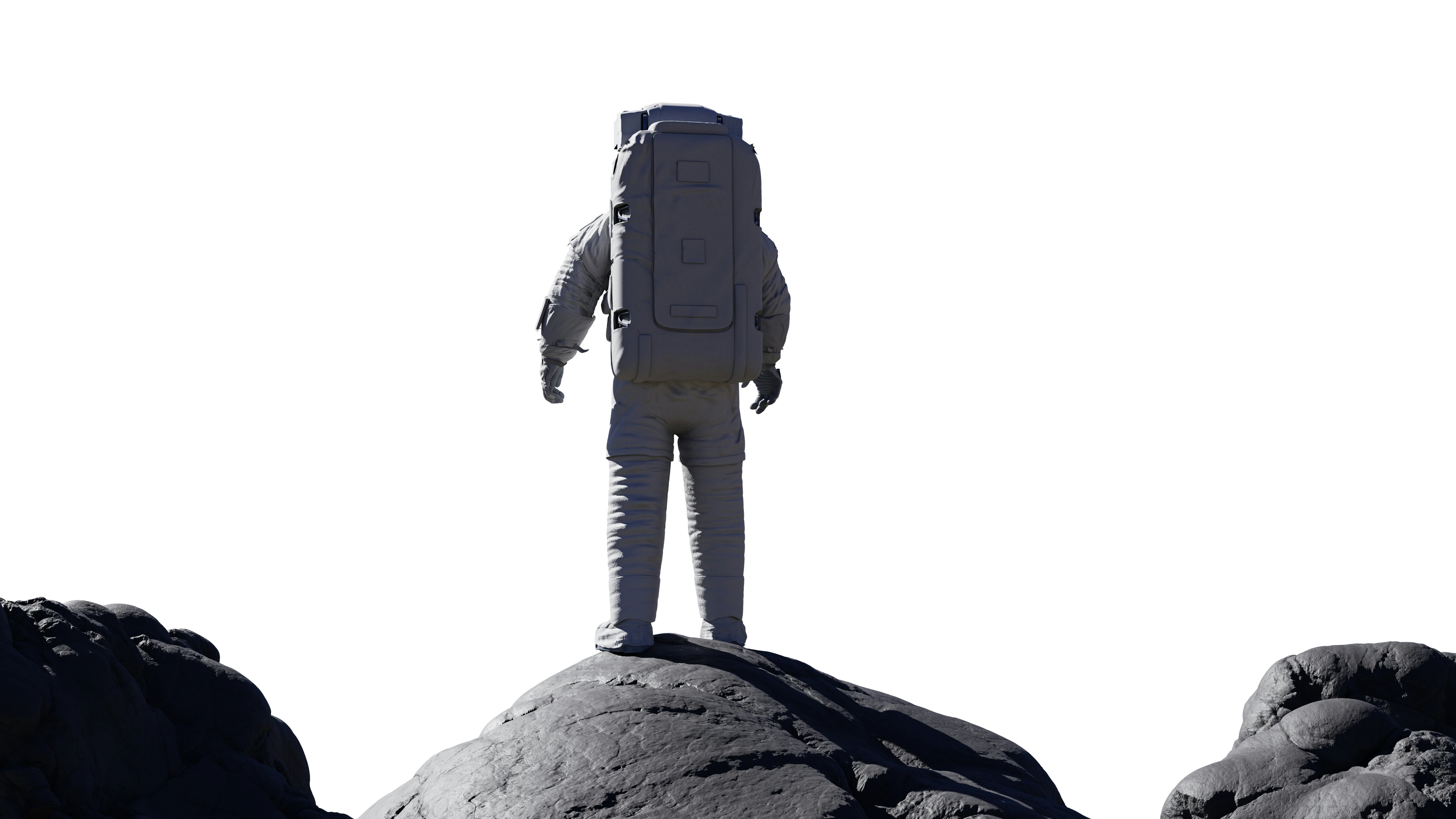
NASA’s Artemis I will culminate in an expensive, overdue but thrilling space mission to the Moon… when it launches. Now battling yet another delay to the mission, the story of Artemis I has unraveled over the course of decades. In fact, the mission’s history is perhaps best defined by unexpected twists, turns, and abandoned plans.
Artemis I is an Apollo-era mission for the 21st century. NASA once again plans to take a series of bold yet incremental steps to deliver humans to space, but now it wants to take our kind farther from our planet and for longer stretches of time than ever before. This latest sojourn to the Moon is not just a frequently delayed $50 billion step on the road to cosmic expansion — it is also the byproduct of political ambitions, a 21st-century aerospace tragedy, and a paradigm shift in cultural ideas about who goes to space.
“It is exciting to watch Artemis reach fruition,” Thomas Ellis, a teaching fellow on American foreign relations at the London School of Economics, tells Inverse. “Like the much-delayed James Webb [Space] Telescope, it’s something that has been in development for a long time.”
But unlike Webb, Artemis is yet to prove itself a success — or even launch at all. Webb was built on a promise it would “unveil the universe,” and so far, it has done just that. Whether Artemis will deliver on its commitment remains to be seen. This potential also raises another question: What is the true promise of the Artemis mission? To answer that, we need to understand where Artemis came from and why NASA has stuck with this very expensive and very much delayed mission. And that story begins more than half a century ago, with the Apollo Program.
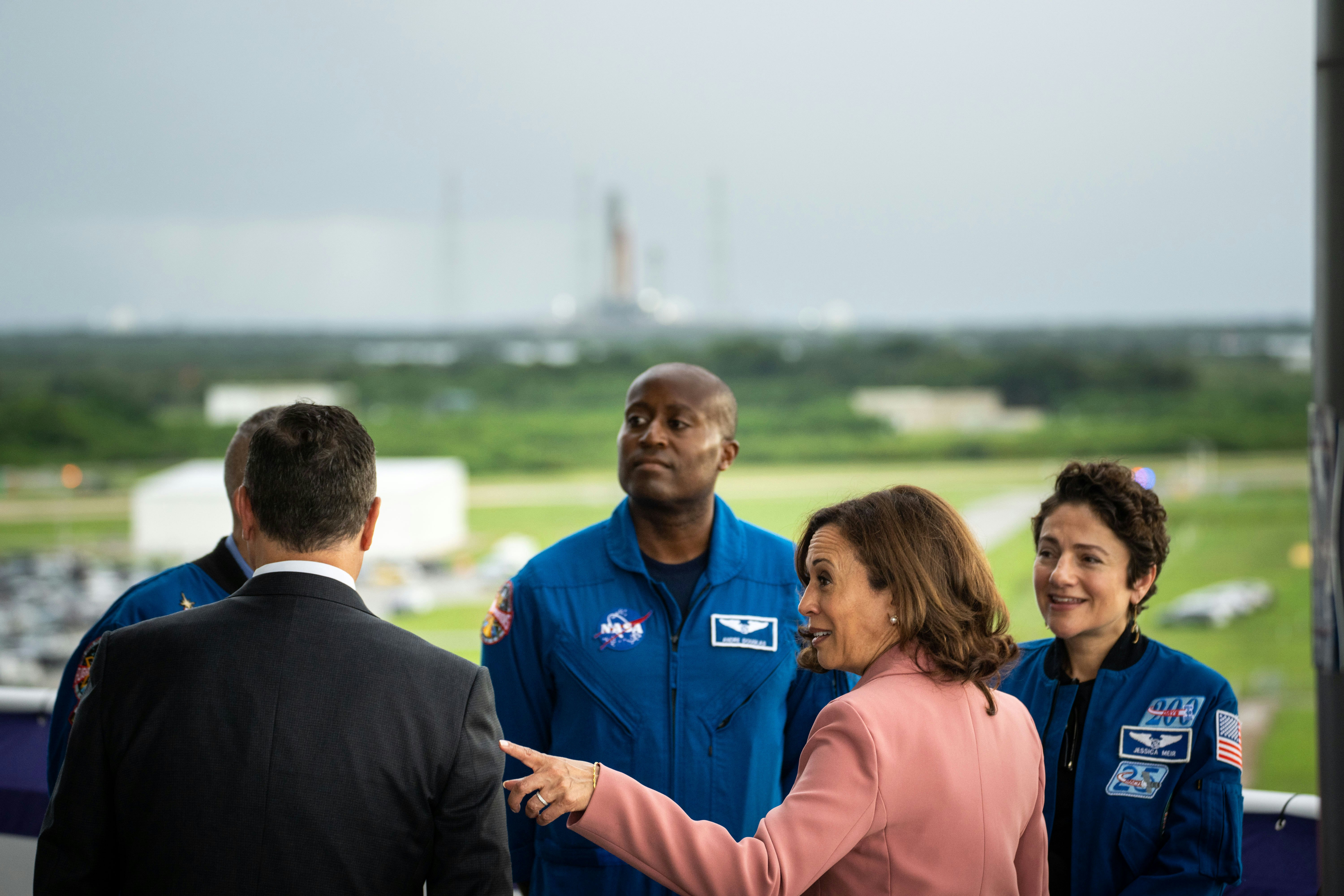
Apollo’s allure
Artemis is a product of the social and scientific legacy left behind by the human spacefarers who flew as part of NASA’s Apollo Program, which ran from 1961 to 1972. There will be no humans aboard Artemis I, but if all goes well with this test flight, its success will enable subsequent crewed missions: Artemis II and Artemis III. Beyond the “dreamlike” vision of humans standing on the surface of another world, Ellis says that human space exploration of the Moon and beyond “will also promise a fabulous scientific dividend” that is ripe for planetary scientists, geologists, astronomers, and more. His sentiments echo the famous 1962 speech at Rice University by President John F. Kennedy, who thought Apollo could enrich our lives and spring “new hopes for knowledge and peace.”
People don’t vote on space policy issues. But presidents support NASA because the missions are distinguished. Not surprisingly, President Joe Biden has embraced Artemis’ promise to pick up where Apollo left off. Biden gets to be the leader who went back to the Moon.
Serious consideration for an Apollo follow-up mission began more than three decades ago.
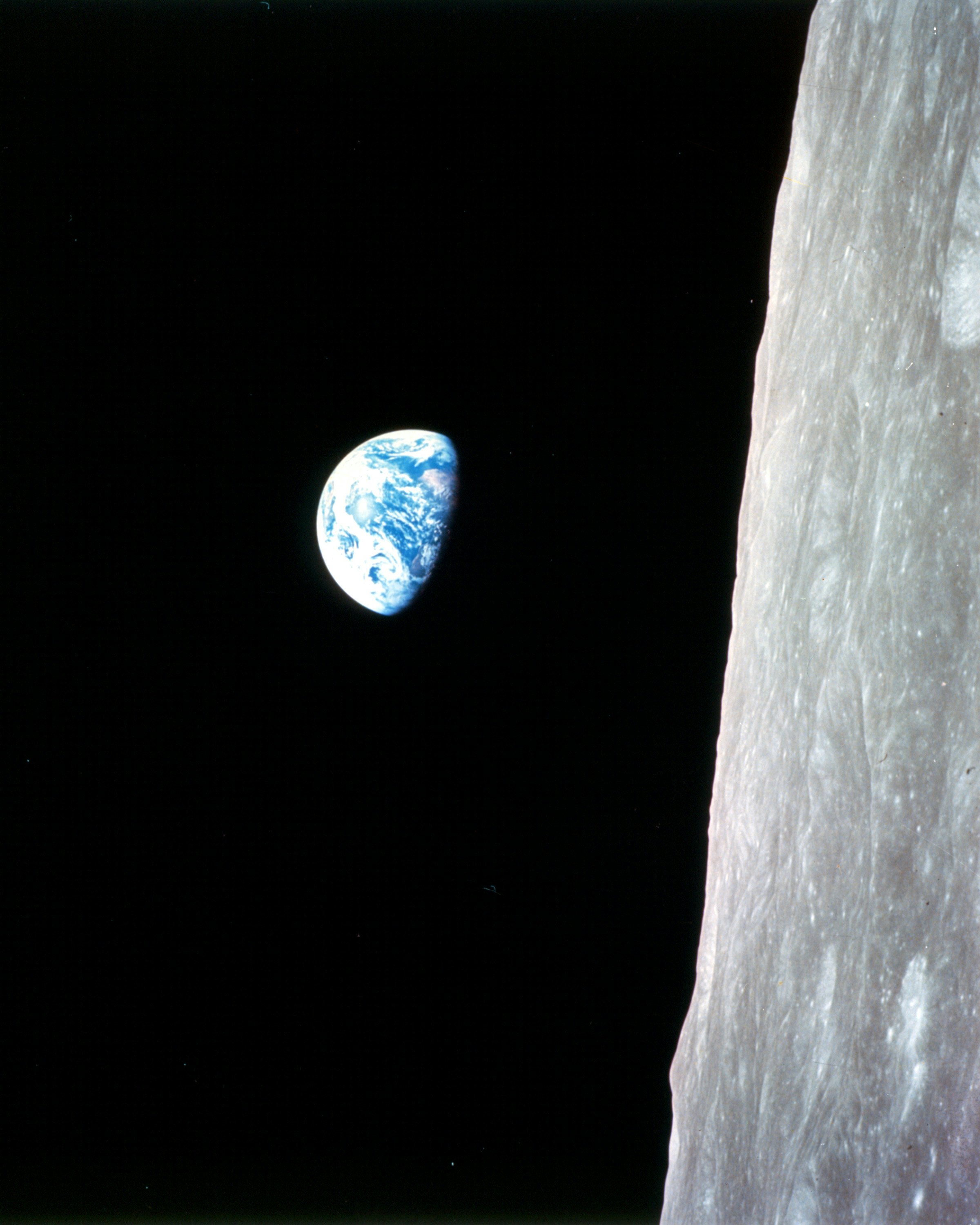
On July 20, 1989 — the 20th anniversary of the Apollo 11 moon landing — President George H.W. Bush announced plans for the Space Exploration Initiative, a commitment to gradually work toward a return trip to the Moon, which would escalate the program to have astronauts set foot on Mars. Nothing really became of that. “It got scuttled by Congress and came out with this infamous price tag of half a trillion dollars,” Casey Dreier, chief advocate and senior space policy adviser at the nonprofit The Planetary Society, tells Inverse.
Ideally, NASA operates as a feel-good entity, Dreier says. But when the agency faces setbacks, the new prospects that once excited politicians can turn into a headache.
“It’s very easy to stand on a stage and make grand statements about humanity’s supposed innate desire to explore and the wonders of outer space,” Ellis says. “It’s much tougher to fund a complicated and expensive program year after year until it reaches fruition.”
Instead, a tragedy may have been the tipping point both NASA and the U.S. Congress needed to put another Moon mission back on the table.
‘A grander vision’
On Feb. 1, 2003, after many successful missions carrying humans into space, the Space Shuttle Columbia reentered Earth’s atmosphere and disintegrated. All seven crew members onboard perished. Dreier says the tragedy forced U.S. leaders to reassess what it was that they asked of their courageous spacefarers. Rather than send astronauts up to the International Space Station every few months for servicing projects, the tragedy raised the idea that their undertaking should be for a more special goal. A return to the Moon would offer these brave people that opportunity.

In 2004 — a year after the Columbia disaster — President George W. Bush announced the “Vision for U.S. Space Exploration,” which tasked NASA to create a crew spacecraft that would be “the first of its kind since the Apollo Command Module,” ready for use just a few years after the anticipated end to the shuttle program. Vision for Space Exploration put a date on a crew returning to the Moon for 2010, 12 years before Artemis I’s actual first launch attempt.
“It was looking for a grander vision that would make the risk taken on by astronauts going into space more worthy of that,” Dreier says. “You want a grander vision if you are going to put your life on the line.”
NASA took up the call. In 2005, it established the lunar return program Constellation. The original concept rested on the creation of two spacecraft — one heavy lift rocket and one crew module. Later, a division of the agency known as Altair also began to design lunar landers. (The heavy science research developed by NASA for Constellation was used to launch the Lunar Reconnaissance Orbiter, which has now been surveying the Moon for 13 years.)
As part of the Constellation Program, NASA engineers designed the Ares I rocket, which was similar to the SpaceX Falcon 9 in terms of its capability. It was supposed to be the solution for taking people to low-Earth orbit and beyond. The engineers made it so that Ares I could attach to the crew capsule, Orion, enabling astronauts to hitch a ride into space. Ares I transformed the Space Shuttle’s solid rocket booster and essentially made it longer and stuck a second stage on top that could reach low-Earth orbit, the Moon, or beyond. Ares I had a heavy-lift counterpart, the Ares V. That only reached the early design stage, which Dreier attributes to other cost overruns from Orion and Ares I.
“None of these rockets as designed ever flew,” Dreier says. The closest Ares I got to fruition was when, in 2009, a prototype with no functional upper stage called the Ares I-X flew on a test flight far below the boundary between our atmosphere and near-Earth space.
That was “the only kind of physical hardware that really came out of this development project,” Dreier says.
The idea behind the Ares rockets was to adapt old Space Shuttle technology to new purposes. One motivating factor to reuse rocket parts that already existed in some form, instead of starting the design process from scratch, was the possibility of saving money. That said, regions with existing NASA rocket-building facilities had incentives to go down this repurposing path, too.
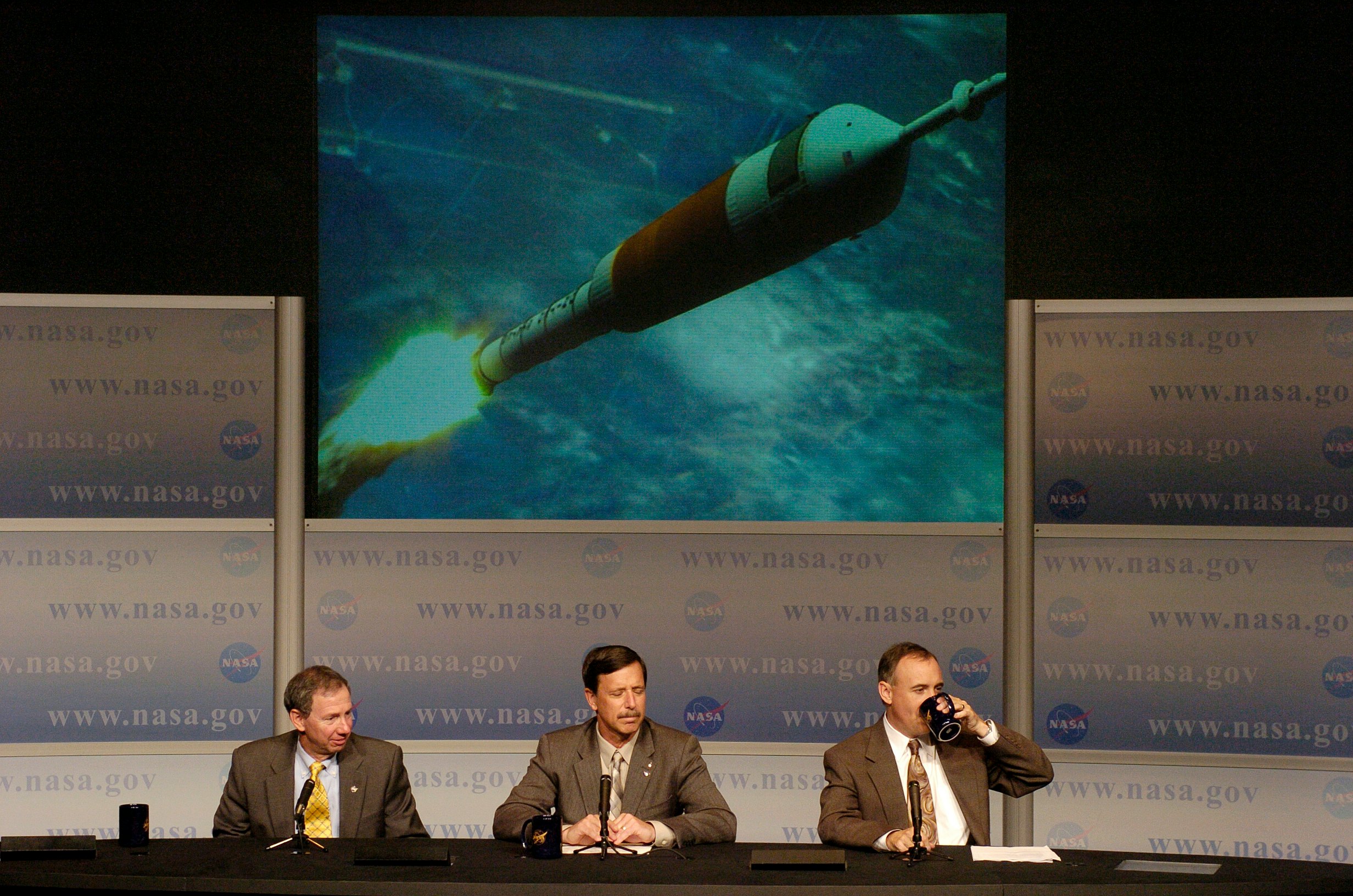
“But that never works,” Dreier says. “Space is hard and all the particular use cases and subtleties come out of the woodwork as soon as you start to build any kind of modification to an existing process.”
Constellation’s floundering pushed a return to the Moon “beyond any kind of horizon that anyone could see,” Dreier says.
Indeed, the seemingly quixotic desire to use old parts to build new rockets is at the core of the chronic delays and budget overruns that now characterize NASA’s Space Launch System (SLS). The most powerful rocket ever built, its lower stage was designed to far exceed the abilities of Apollo’s Saturn V rocket. It is also a direct descendant of the Ares V, which never actually took off.
Even as SLS has progressed beyond the Constellation Program, it has encountered similar setbacks. The SLS’ four engines, for example, were initially meant to be built using recycled technology from the Shuttle era. But the SLS’ goals are so different from the Shuttle’s that the current SLS engines are made of cheaper and expendable single-use boosters. In other words, the Space Shuttle was a reusable craft like SpaceX’s Falcon 9, but the Space Launch System is a one-and-done rocket.
It’s also eye-wateringly expensive. According to the Planetary Society, a 2022 NASA assessment found that the development of the Artemis I SLS cost 42 percent more than originally projected. The organization also states that the Orion capsule’s price tag is 37 percent higher than first estimated. These problems killed the Ares designs, yet the SLS and Orion managed to survive the original Constellation Program with help from Presidents Barack Obama and Donald Trump.
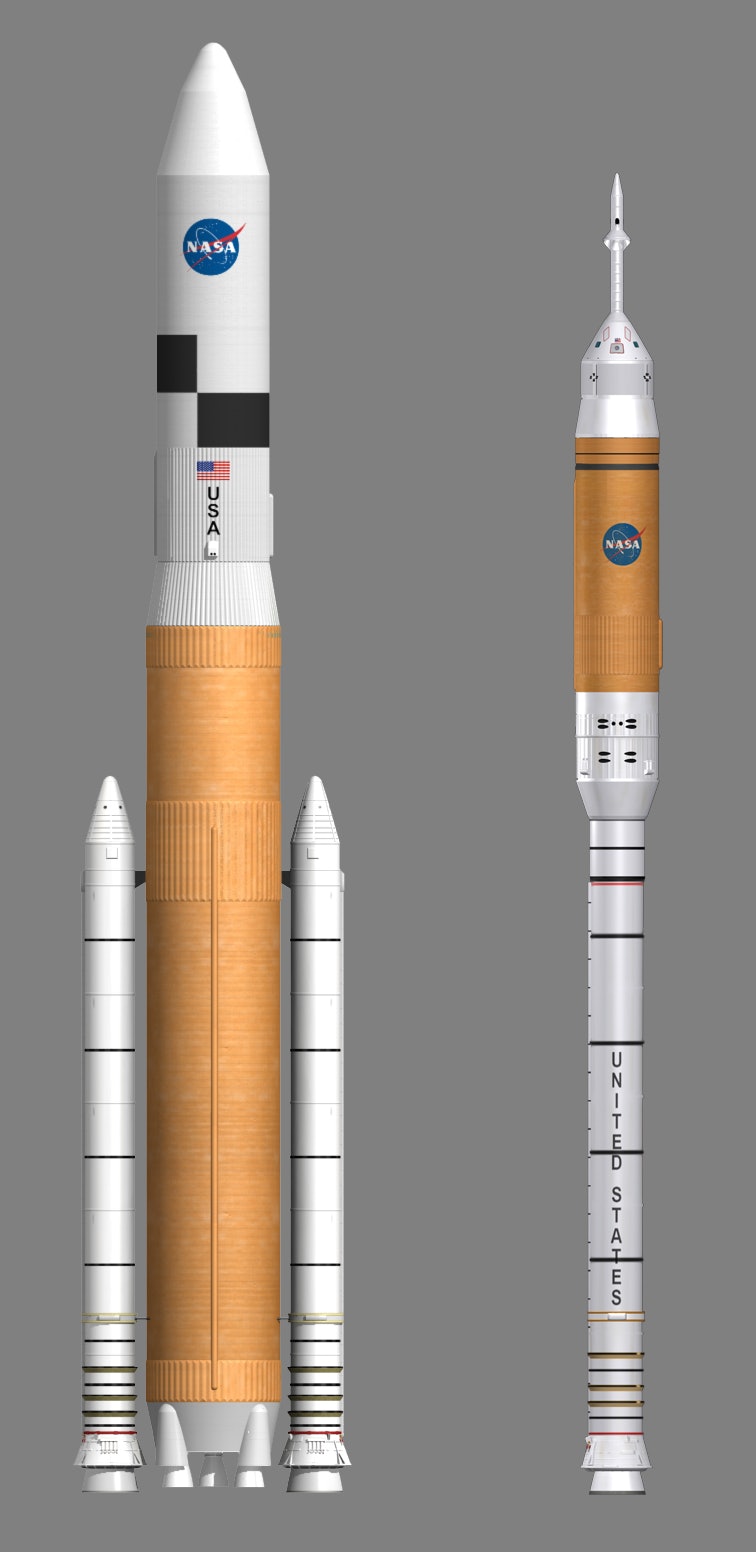
Under a magnifying glass
When President Obama entered office in 2009, he gathered a team called the Augustine Committee. This group of experts from across the aerospace industry were tasked with making judgment on the Constellation Program — and that same year they found it, perhaps unsurprisingly, wanting.
The investigation prompted the Obama administration to propose the cancellation of Constellation. The administration wanted NASA to, instead, invest in advanced technologies like engine propulsion, to use NASA as an innovation incubator, and to work with the private sector to secure human flights into low-Earth orbit without the Shuttle. But it didn’t get everything it wanted. Congress freaked out over Constellation’s cancellation. Several Florida lawmakers, including former U.S. Rep. Suzanne Kosmas and former U.S. Sen. (and current NASA administrator) Bill Nelson sought to “protect Space Coast jobs” from what they saw as an economic risk to their districts. The news also drew ire from politicians in Texas, Louisiana, and Alabama, where NASA centers for building rockets and crewed mission technologies support the local economy. As a result, key parts of Constellation survived: The Orion capsule, for example, was built in 2006 and will still perform most of the work for the Artemis Program. The never-built Ares V transformed into SLS, the most powerful rocket ever.
“Shepherded by senators from Texas and Florida, the [2010] Authorization Act ensured continued development of Orion and a heavy-lift rocket program,” Teasel Muir-Harmony, technology historian and curator at the National Air and Space Museum in Washington, D.C., tells Inverse. “It charged NASA with utilizing the former space shuttle and Constellation assets, such as the workforce and existing technology.”
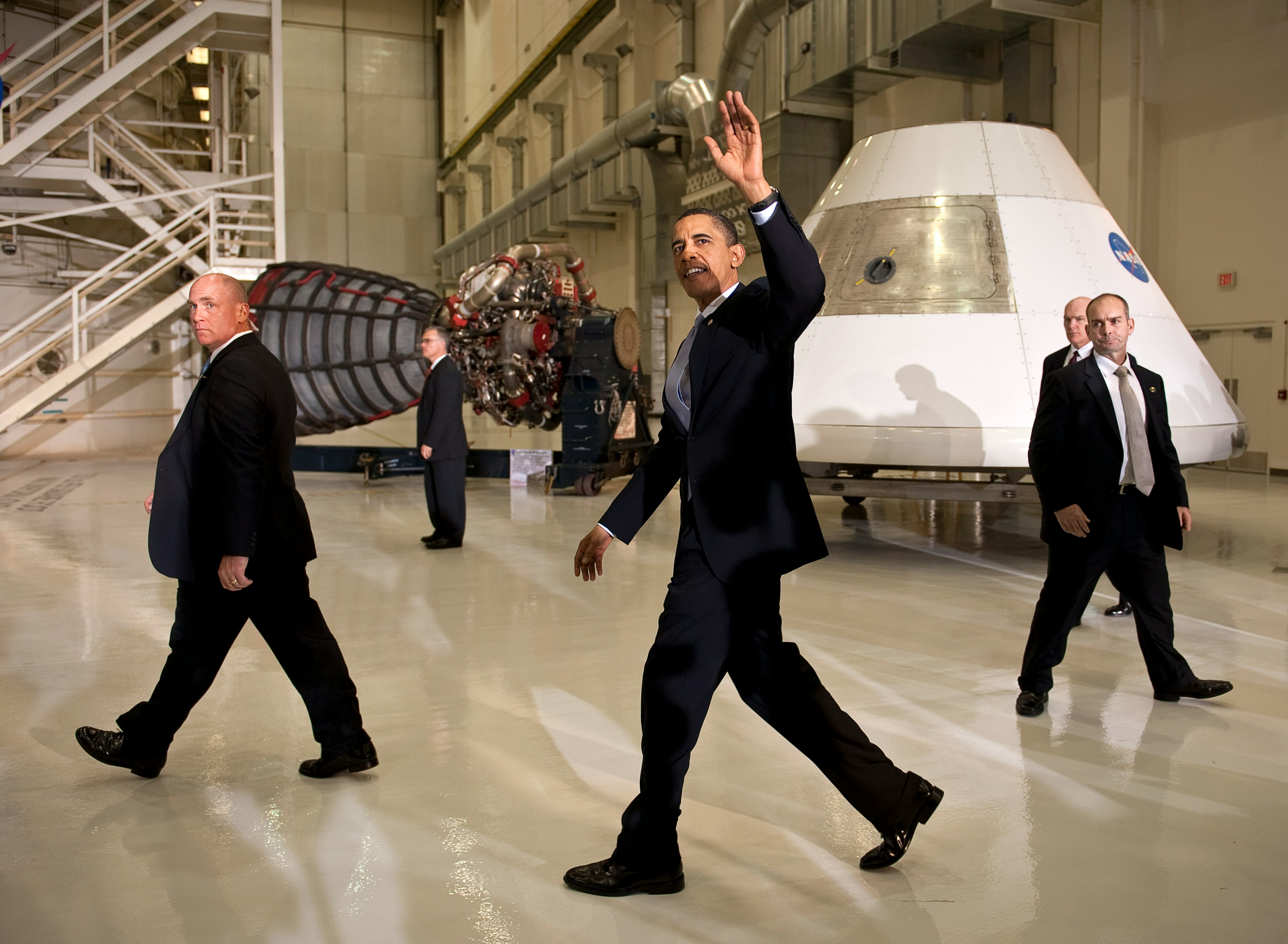
But some private-public partnerships have borne fruit in efforts like SpaceX’s Falcon 9 and the Dragon cargo and crew capsules. NASA had worked with private companies before, but when Obama signed the NASA Authorization Act of 2010, it made these alliances critical to the agency’s operations. They are a crucial element for all the Artemis Program’s components, including the far-future goals of spacesuits, a lunar base, and the lunar gateway.
“Pursuing this new strategy will require that we revise the old strategy,” Obama said in a 2010 speech at the agency’s Kennedy Space Center to quell rattled nerves. “In part, this is because the old strategy — including the Constellation Program — was not fulfilling its promise in many ways.”
This change would address what Obama called “the reluctance of those who hold office to set clear, achievable objectives; to provide the resources to meet those objectives; and to justify not just these plans but the larger purpose of space exploration in the 21st century.”
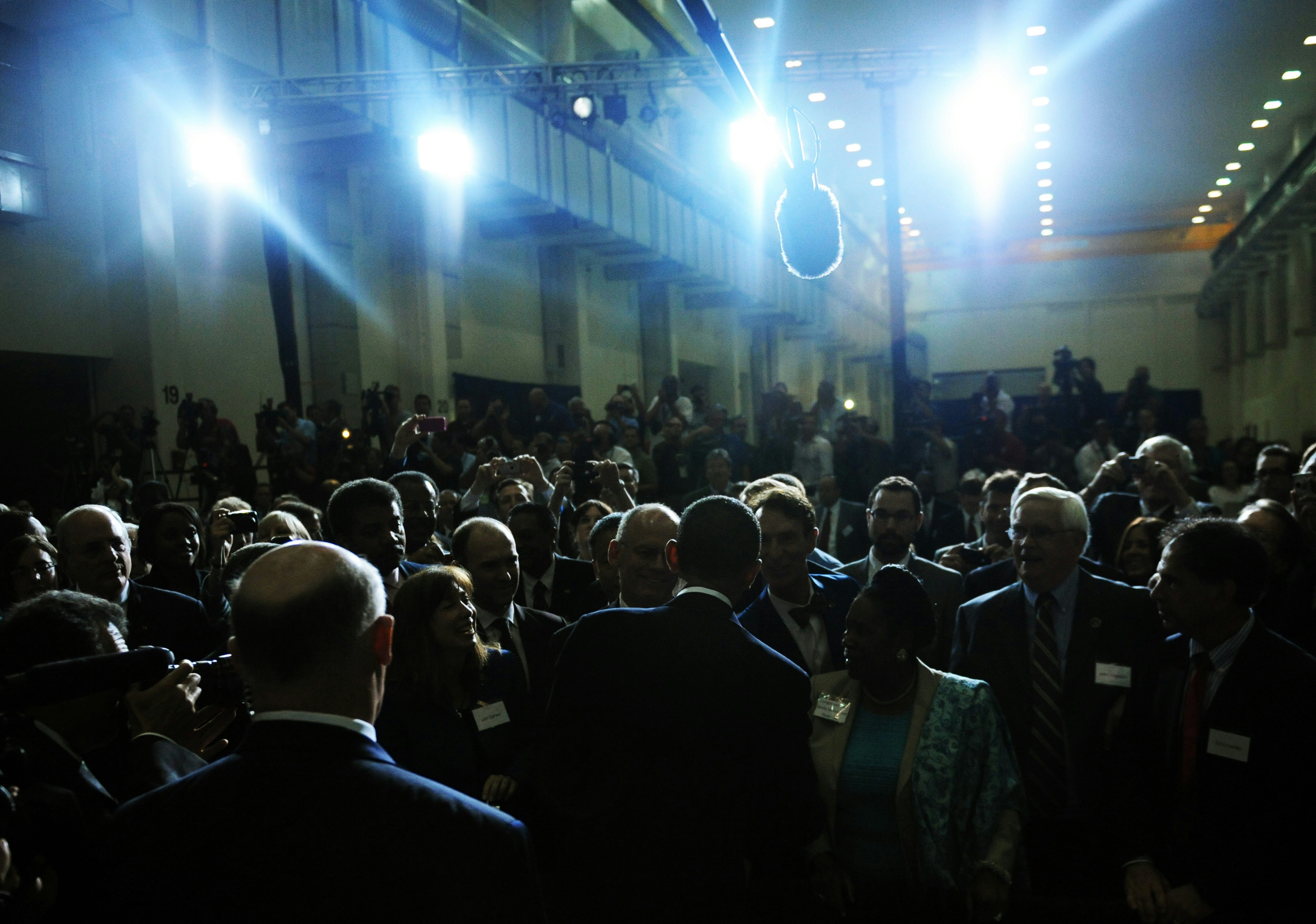
Artemis Program
By the time Trump entered office in 2017, existing components to the Artemis Program pieces were already in development (although should have been already completed). But what the administration did — specifically Vice President Mike Pence as the head of the National Space Council — was to put a new twist on the “low-grade lunar return program” NASA was pursuing, Dreier says. In fact, it got a full rebrand.
In 2019, the White House launched NASA’s fresh and focused Artemis Program, named after the Greek goddess and sister to Apollo. It had a schedule, a purpose, a logo, and a mission.
Building Moon-faring technology is what the space agency was created to do. Apollo’s legacy has left the agency stuck with that legacy and all that it means to the political bodies that fund it.
“Apollo is this rare point in NASA history where everything was kind of new,” Dreier says. “They were building infrastructure for the first time … placing NASA centers, new ones, creating them, around the country for the first time.
“But ever since then, NASA has been kind of fixed in its infrastructure size. All the NASA centers are the same NASA centers that we’ve had for the most part since the past 50 years. And NASA doesn’t get to close things that they don’t need anymore.”
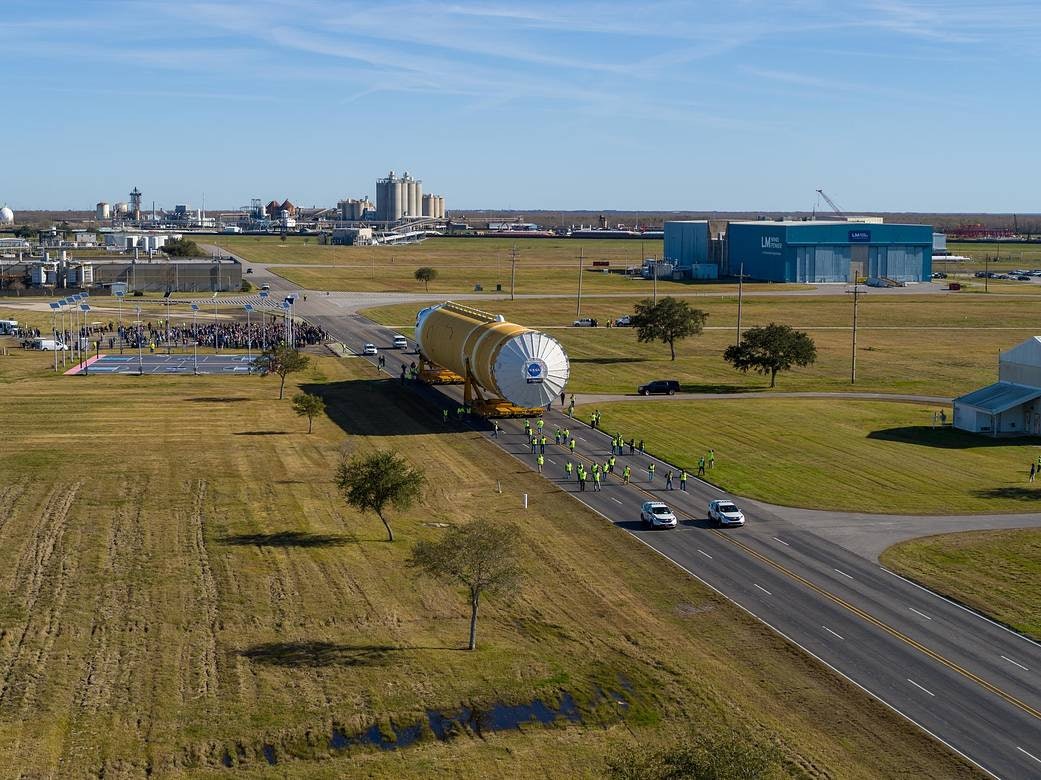
“They have to reassemble what they have to work on a new goal,” Dreier adds.
At the local level, politicians in rocket-building states like Alabama, Florida, Mississippi, and Texas are keen to keep spaceflight at the top of NASA’s priority list to benefit their constituents.
It’s not unique to NASA. “Stuff like this is an inevitable outcome,” Dreier says, when you have a democratic representation system of government. Politicians are incentivized to say their centers should be making rockets, especially when billion-dollar contracts can leave a huge imprint on communities that don’t harbor other industries with purses that heavy.
“If you read the legislation that created the SLS, it says for NASA to use existing contracts, existing facilities as much as they can, which keeps these same people employed and shifts them onto SLS.”
So here we are:
- 54 years since NASA’s first trip around the Moon
- three scrapped project names
- two bouts with cancellation
- 12 years since the first target date for Apollo successor
- six months since Artemis I first rolled out to the launchpad
- four (essentially six) fueling attempts
- two weeks until the next available launch window opens
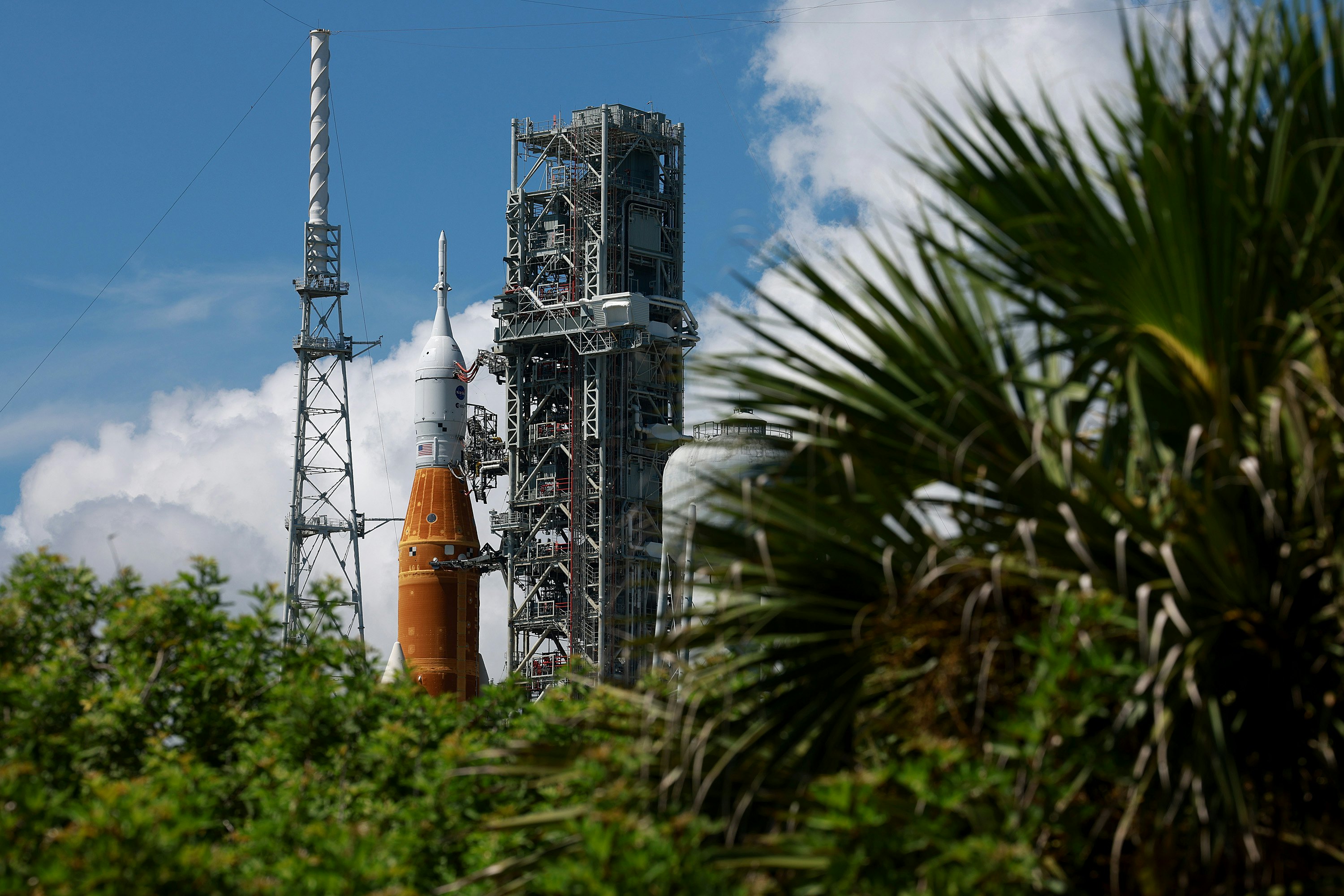
What Artemis could do
If Artemis’ SLS succeeds, it proves a model that could generate massive revenue for Apollo engineering hotbeds for the foreseeable future. If it faces more delays, SLS could be usurped by commercial providers. The Europa Clipper, for instance, will now fly on SpaceX’s heavy lift vehicle instead of SLS because of delays.
Artemis’ laurels would reinforce U.S. geopolitical might, too. As the author of the Artemis Accords, the United States has controlled the “‘rules of the road’ in space exploration and utilization,” Ellis says. Time will tell how its adversaries in space will respond. China has already committed to work with Russia — the major U.S. colleague on the International Space Station — to build an uninhabited moon base.
It’s also a potentially special moment offering hope. Artemis I’s launch in 2022 would follow the volatility of recent years. Since the turn of the decade, the United States has witnessed the ravages of a pandemic, an insurrection of its Capitol, growing wave of fearsome white nationalism and horrifying gun violence statistics, and the ripple effect that the police murder of George Floyd had on how organizations publicly tackle racism.
NASA rides this current of discourse when it frames the value of Artemis. “The Biden administration has been keen to stress that Artemis will put the first woman and first person of color on the Moon,” Ellis says.
“No doubt, those astronauts will be hugely inspiring to audiences around the world.”

NASA is currently targeting a launch in 2024 for Artemis II, a mission that will fly by the Moon but not land, much as Apollos 8 and 10 orbited the Moon but didn’t put boots on the ground. It would be a landmark event: A new generation of astronauts would achieve humanity’s first return to Earth’s natural satellite since 1972.
The long-awaited landing comes with Artemis III, no earlier than 2025. NASA says this will establish new industries on the Moon and reignite passions for space travel. Ellis thinks social media, a facet of our modern world that didn’t exist during Apollo, may play a unique role in NASA’s efforts to popularize their program. NASA may then build off Artemis III and choose to send astronauts toward another benchmark location like an asteroid or Mars.
But this lofty idea must rewind it back. Everything hinges on Artemis I. And first, that rocket must prove that it can fly.







